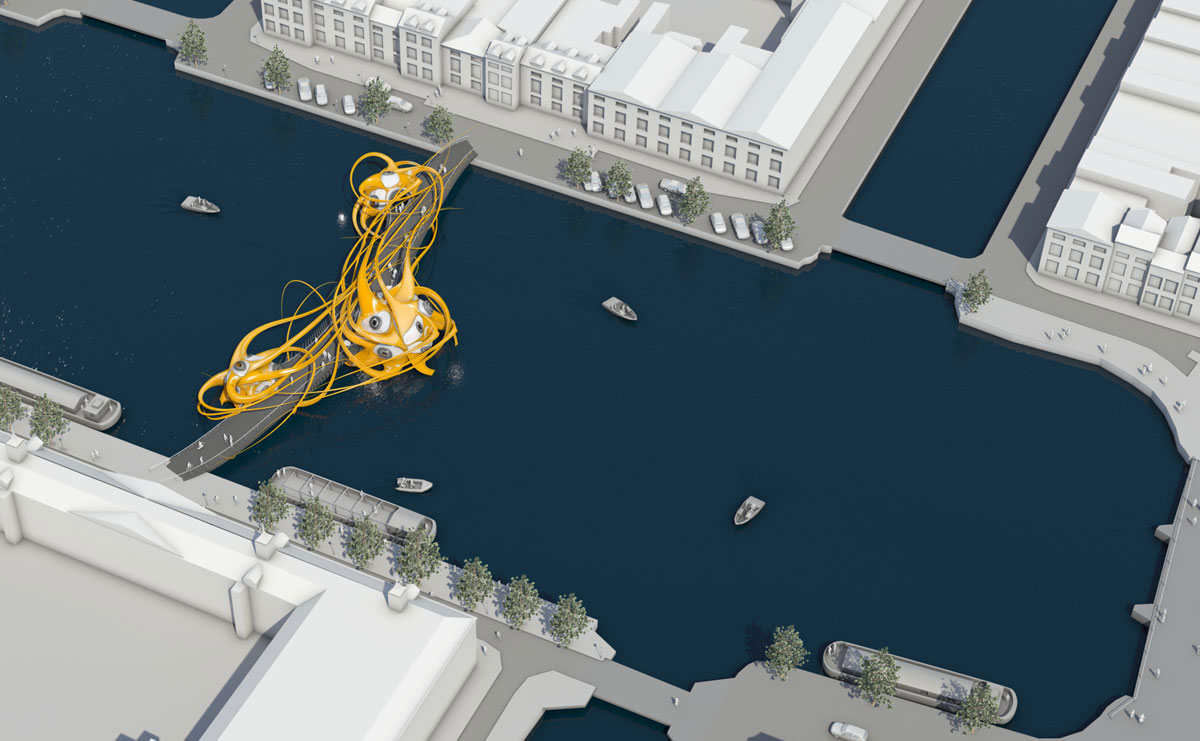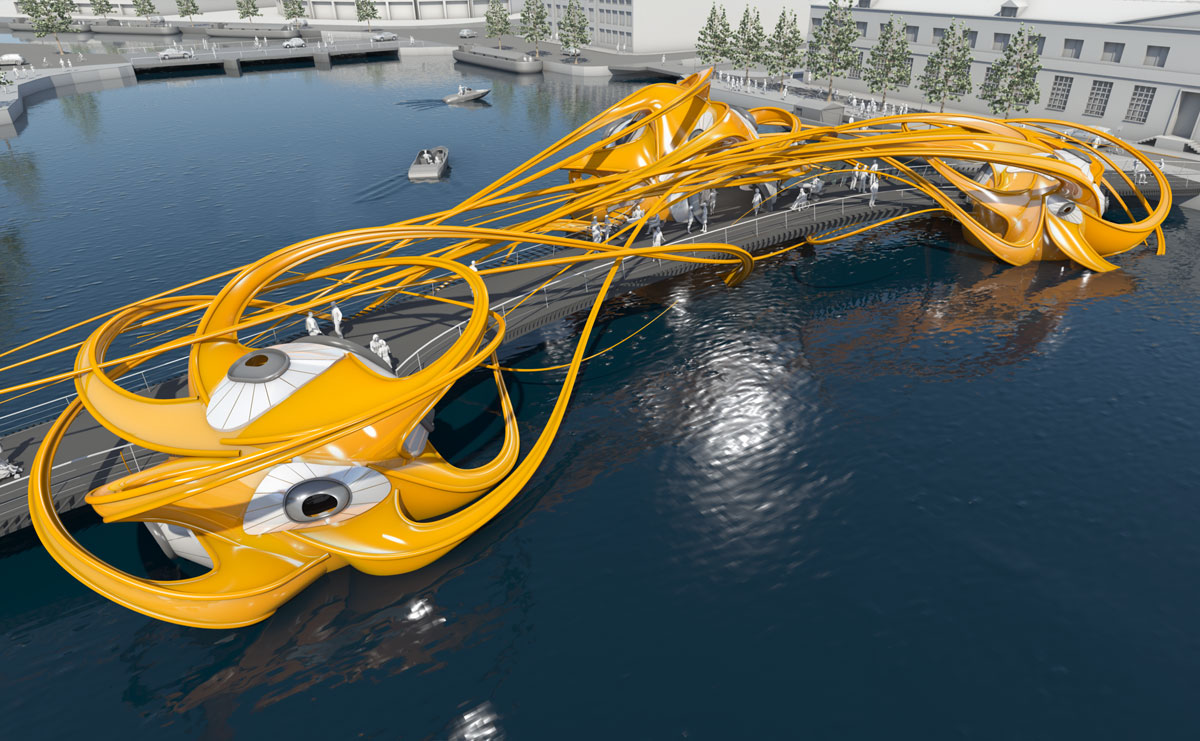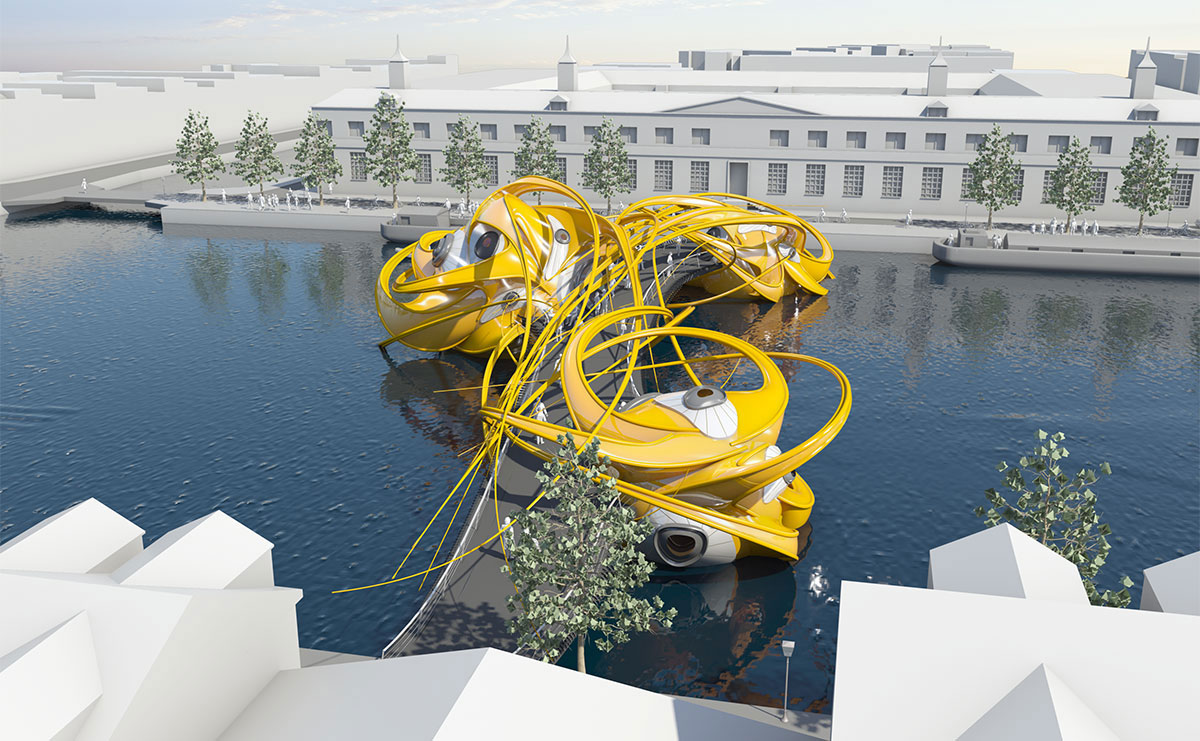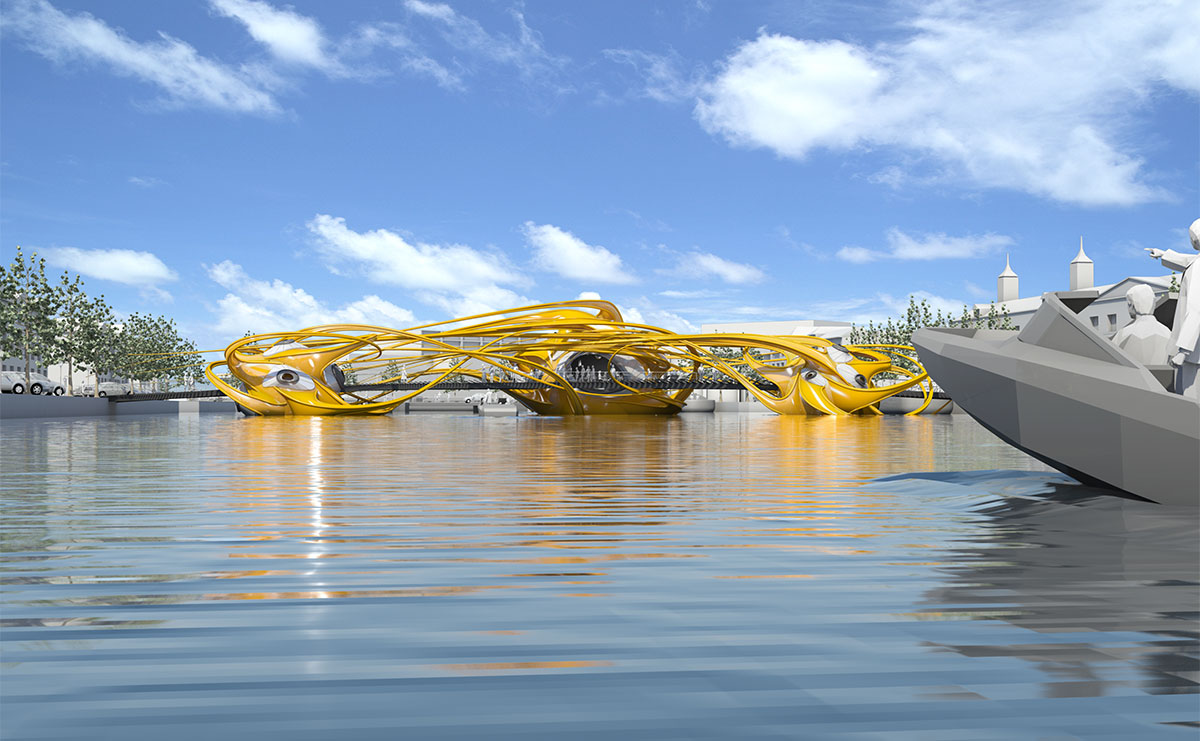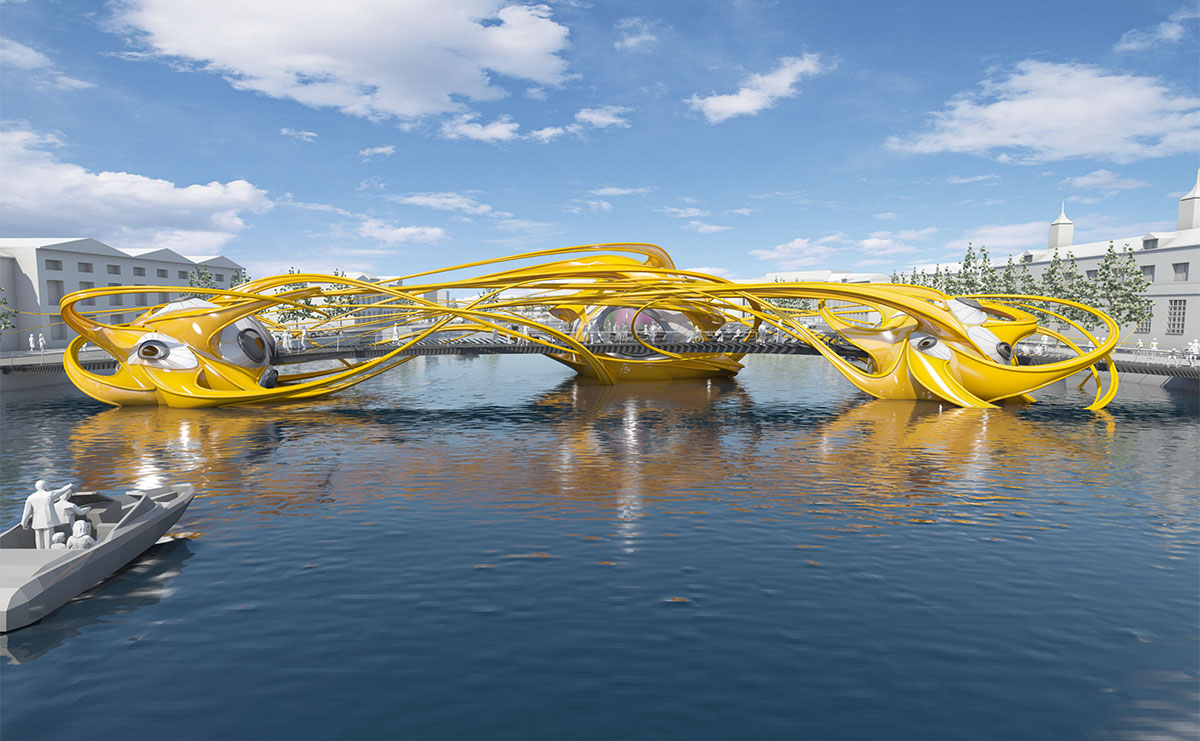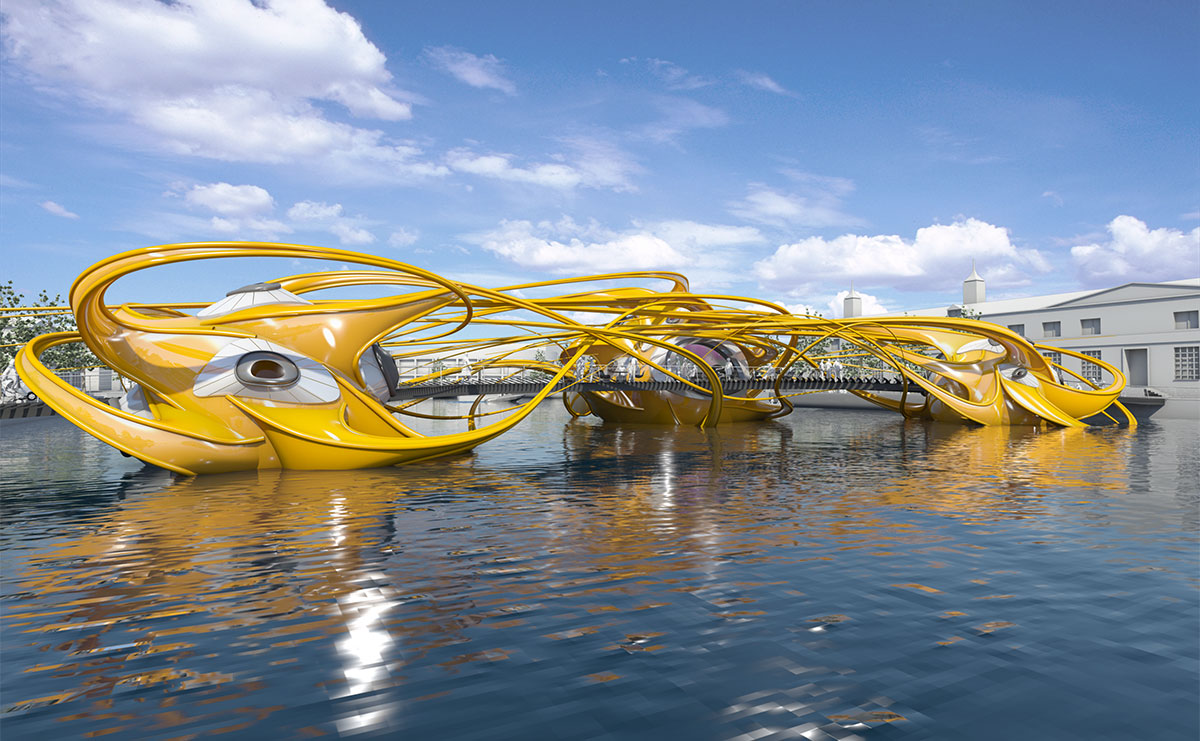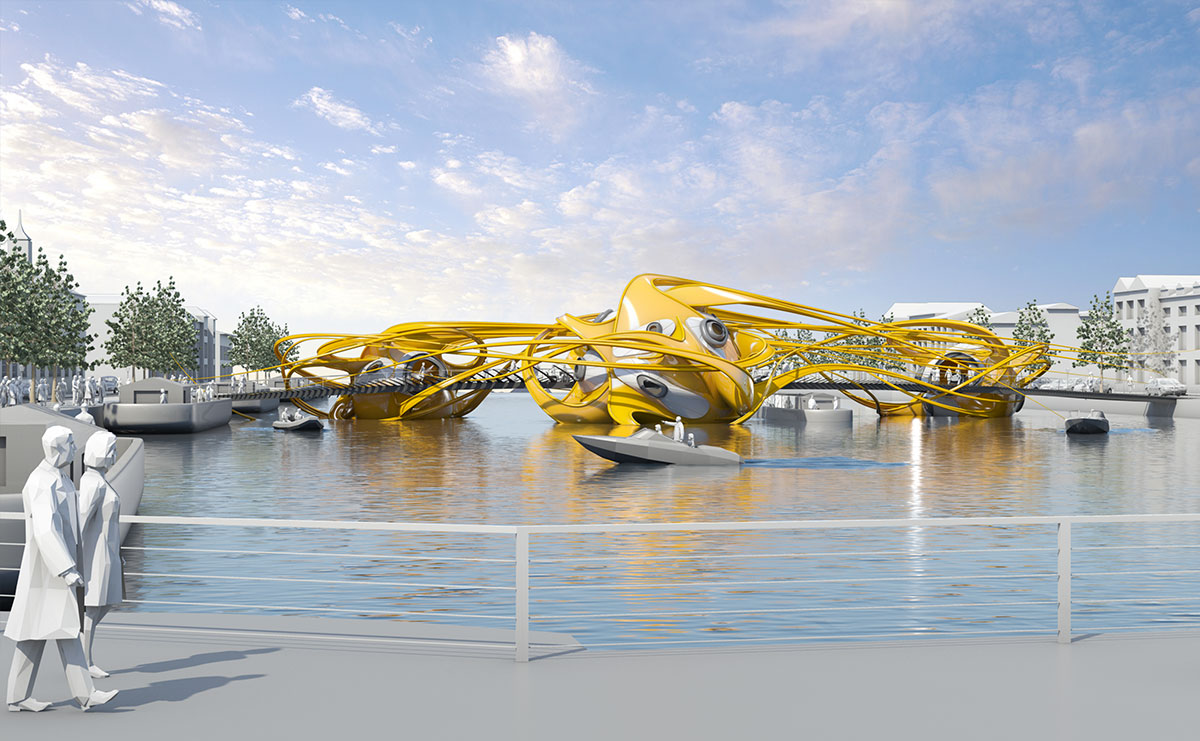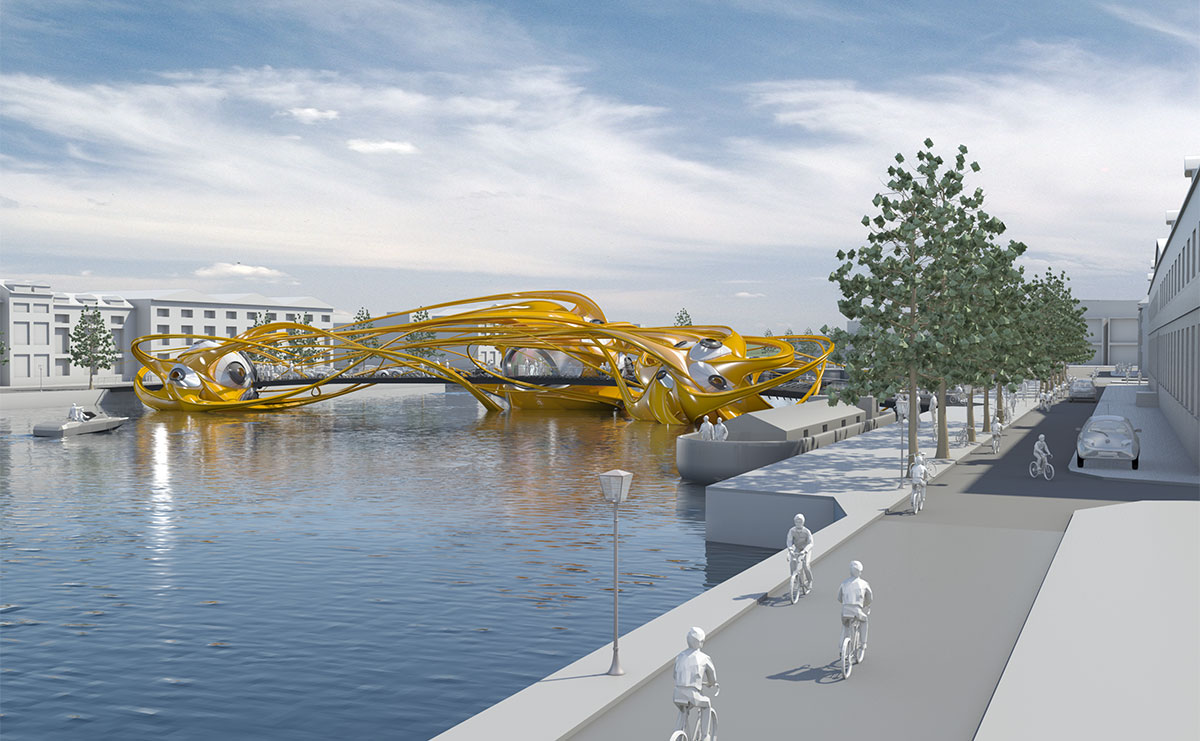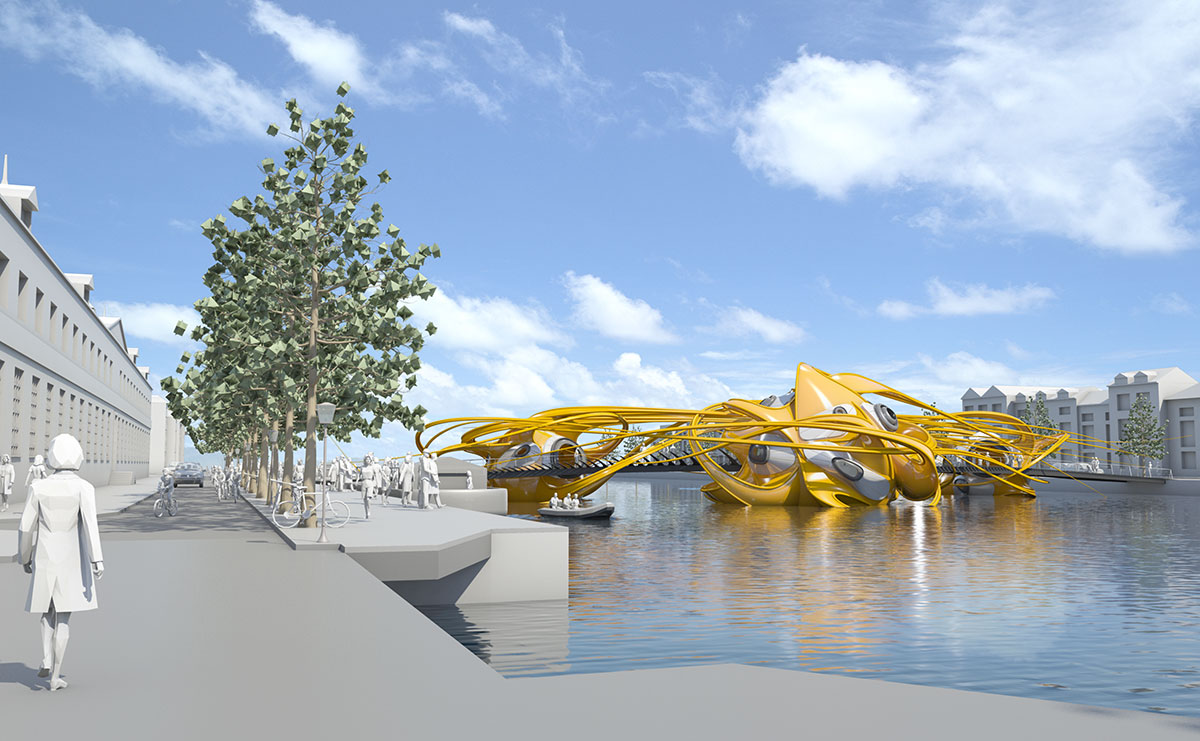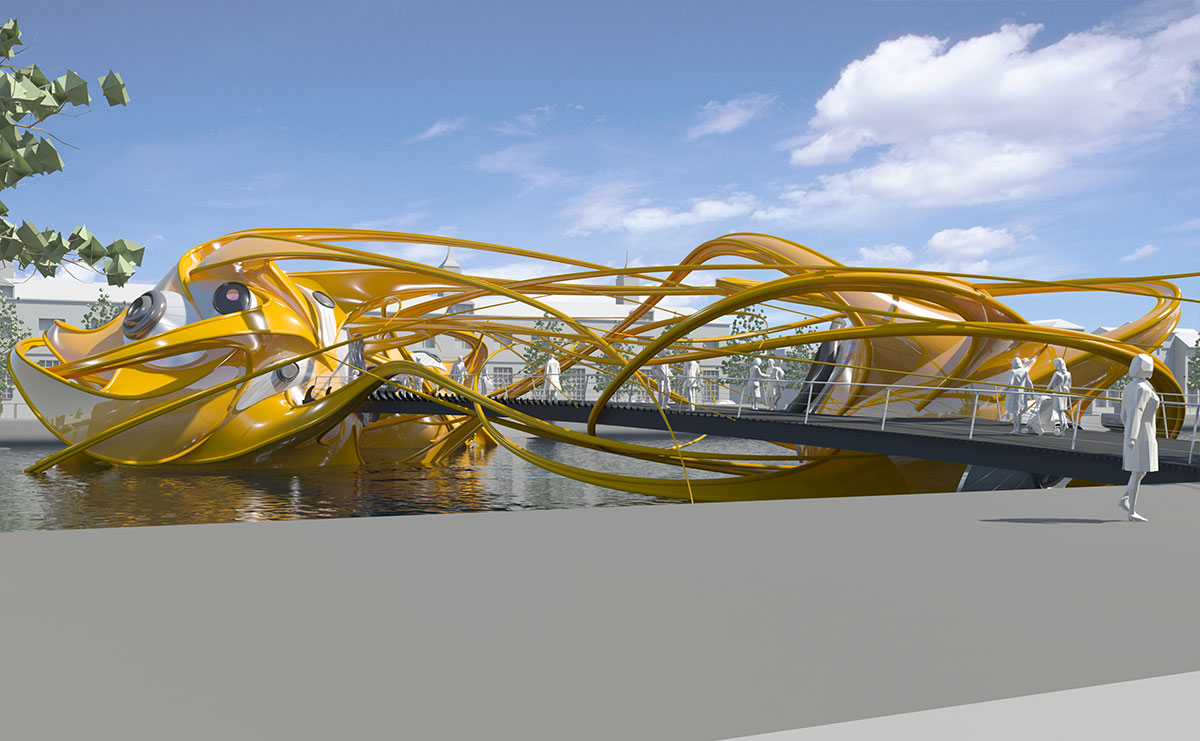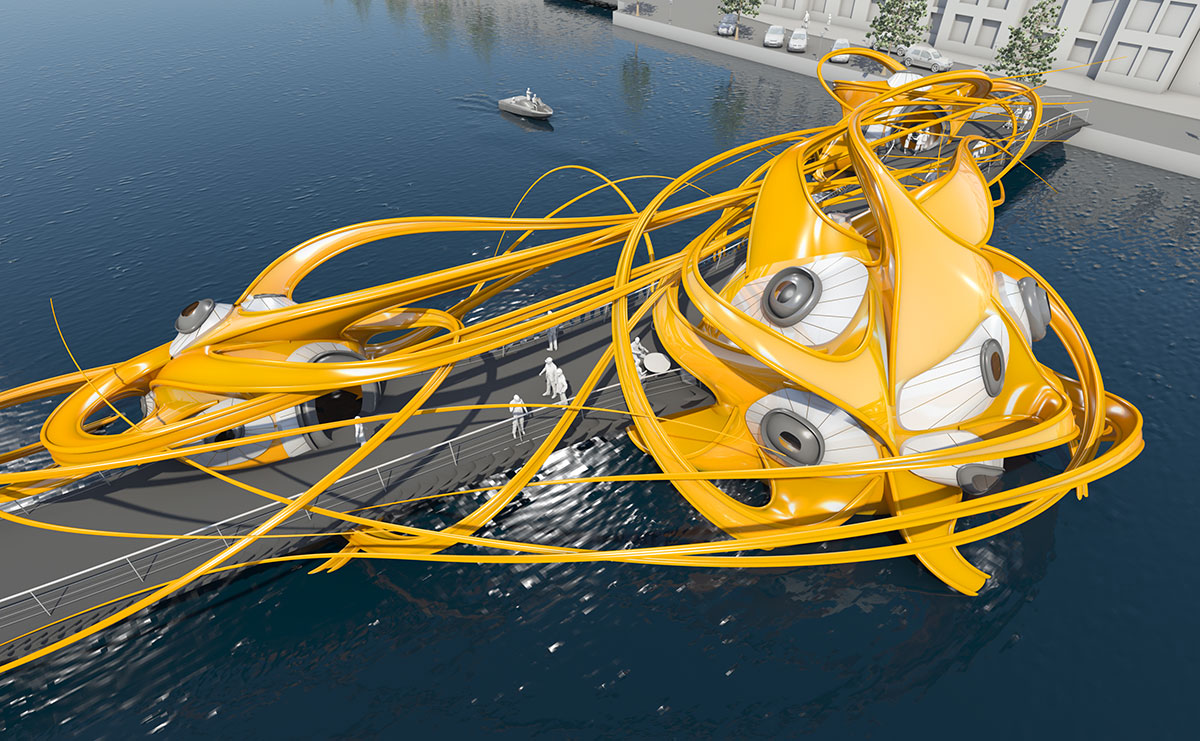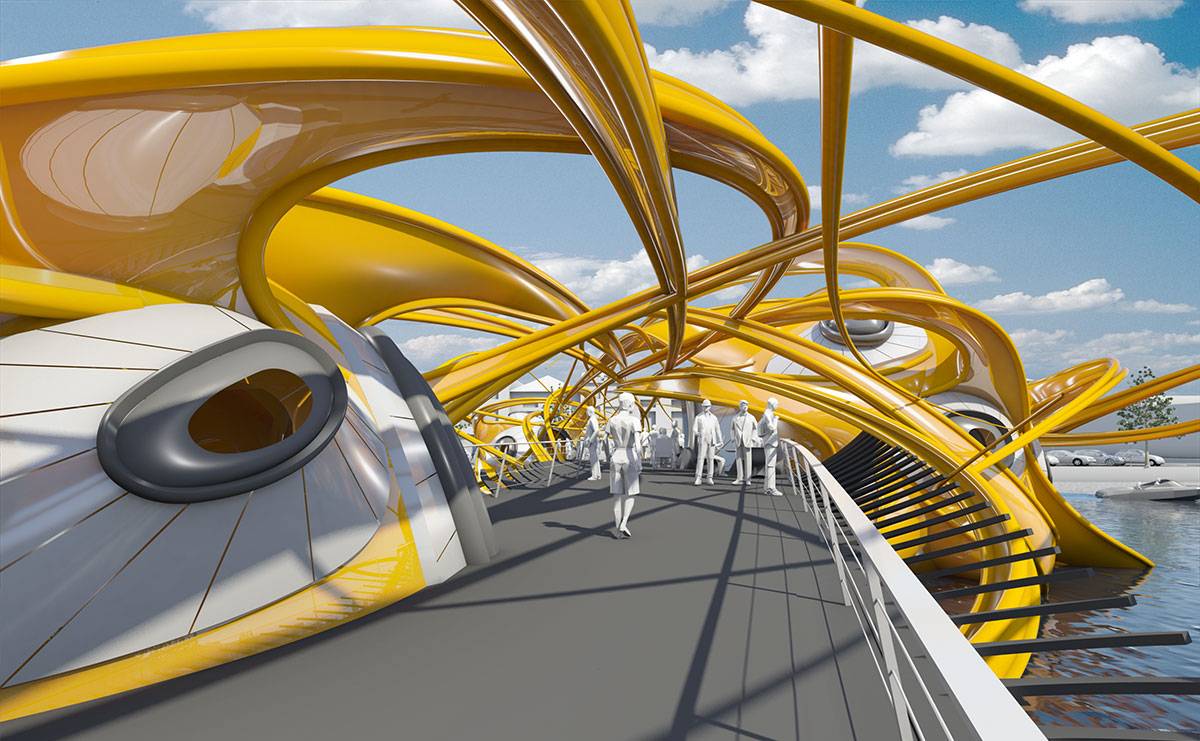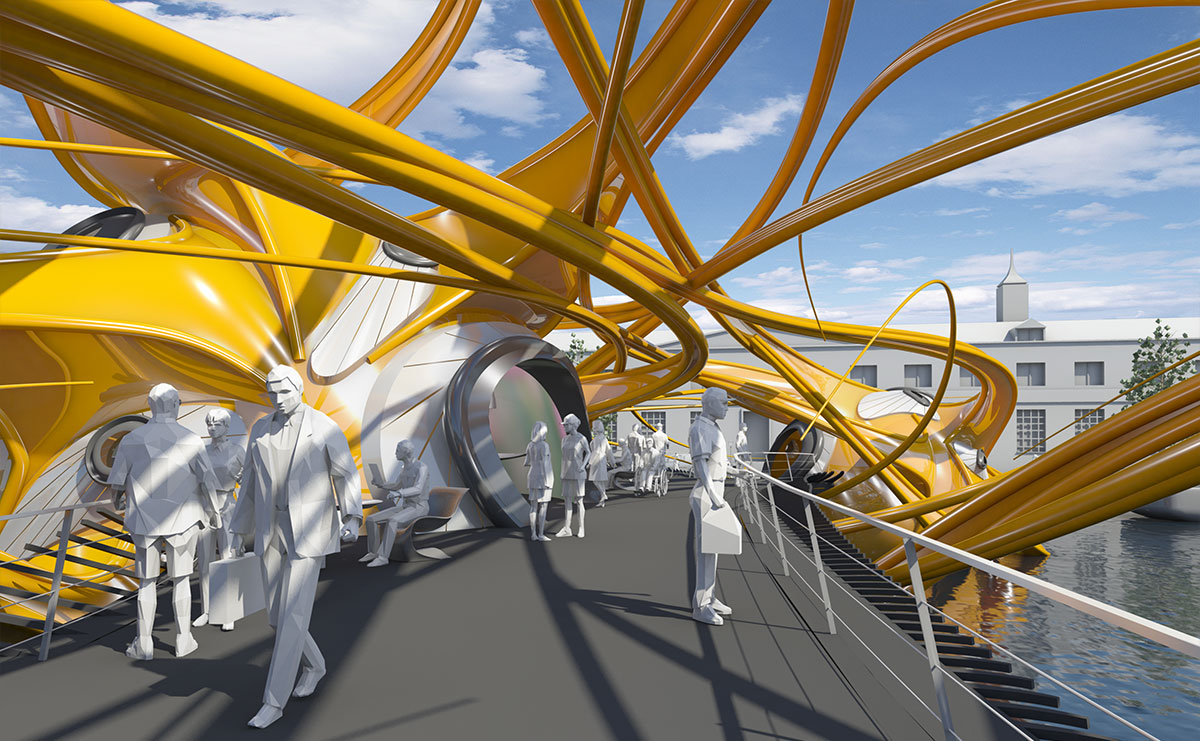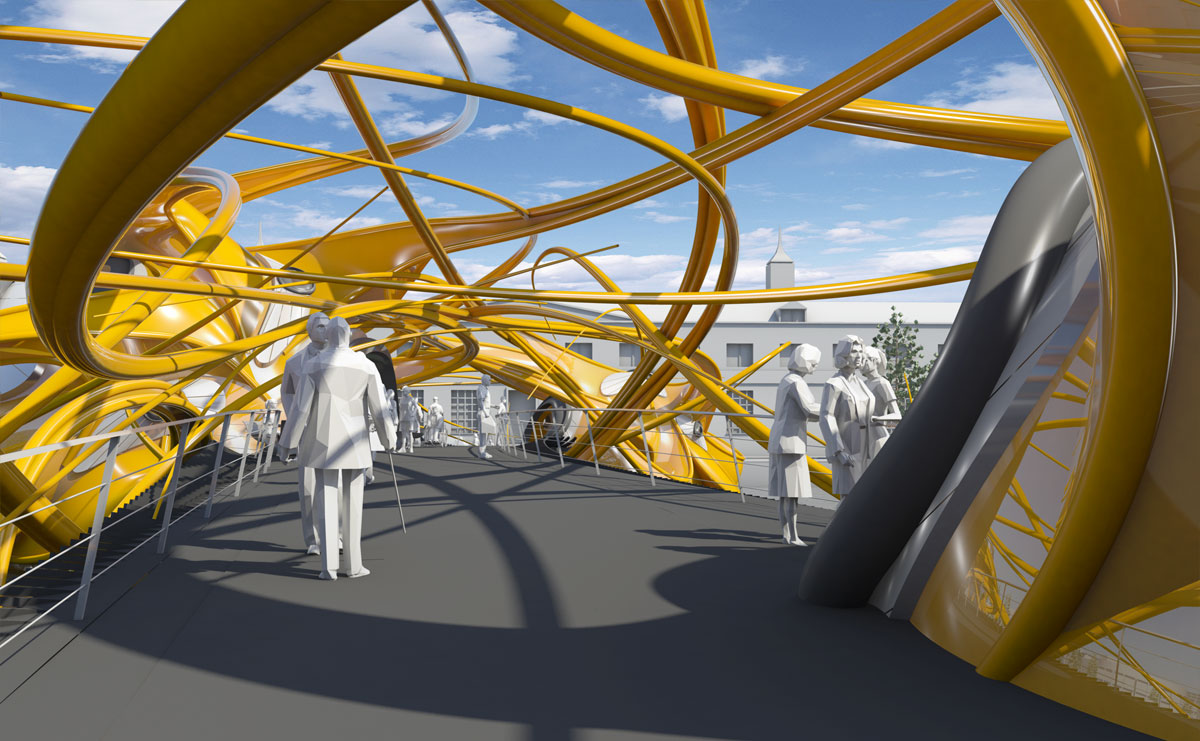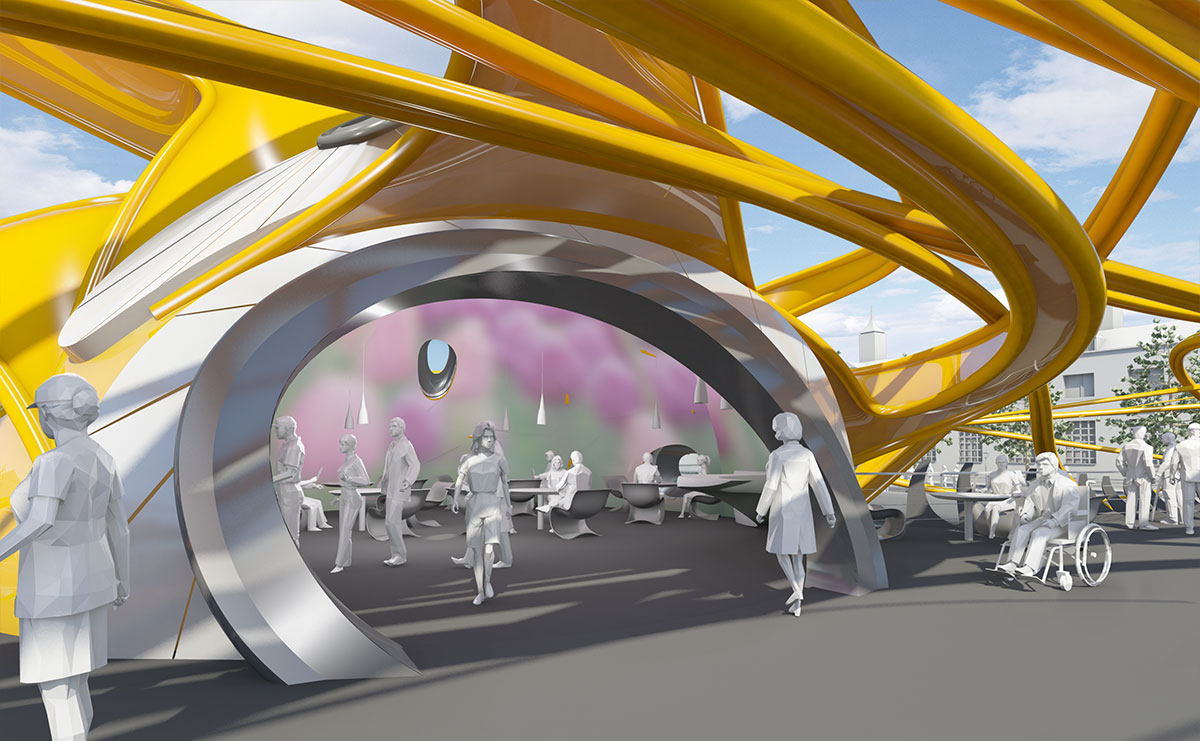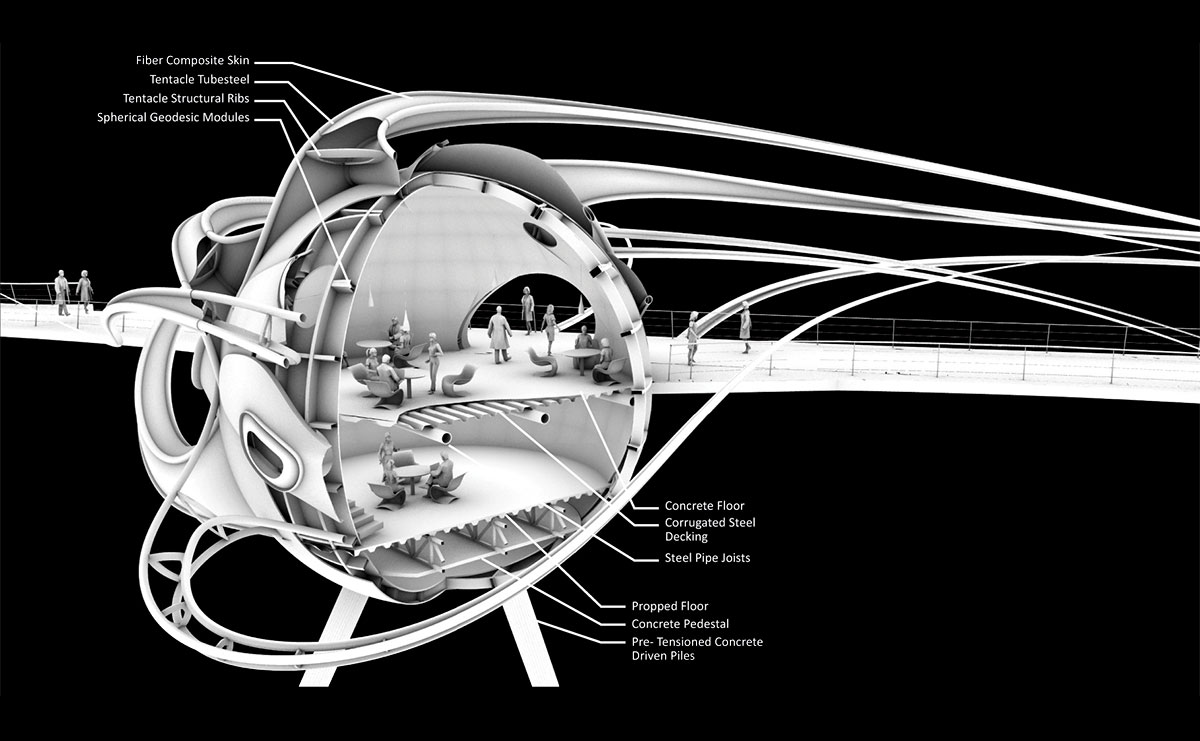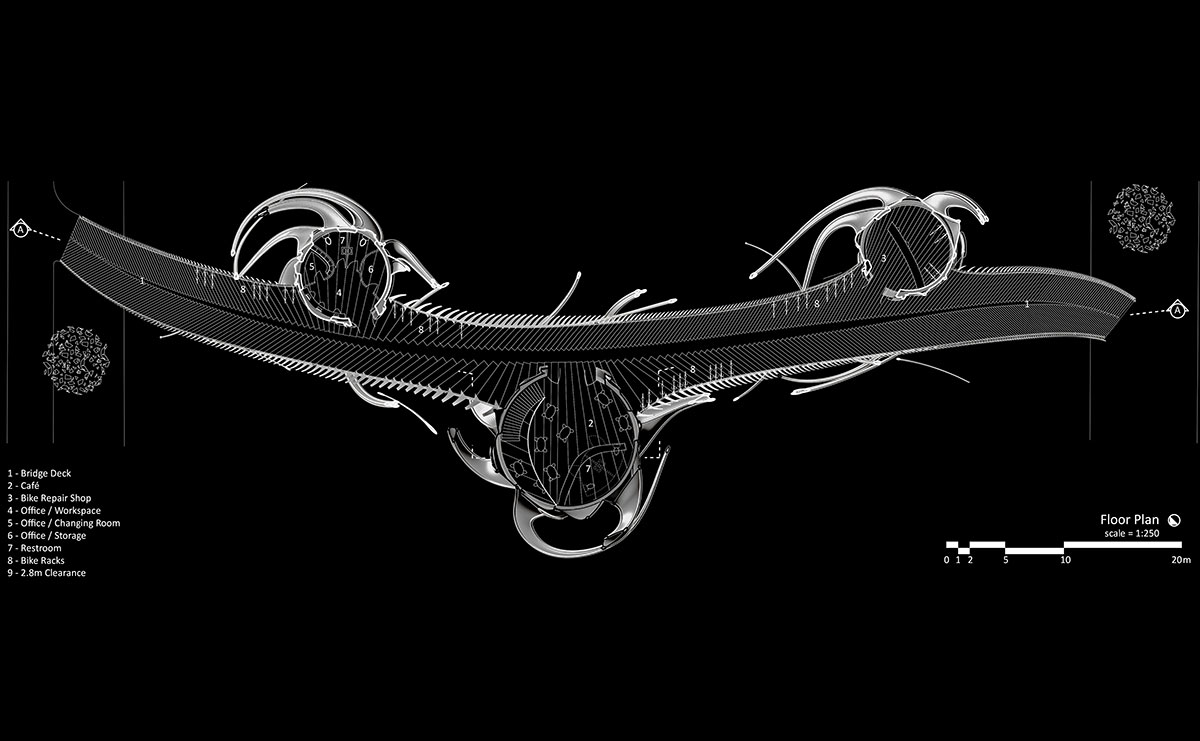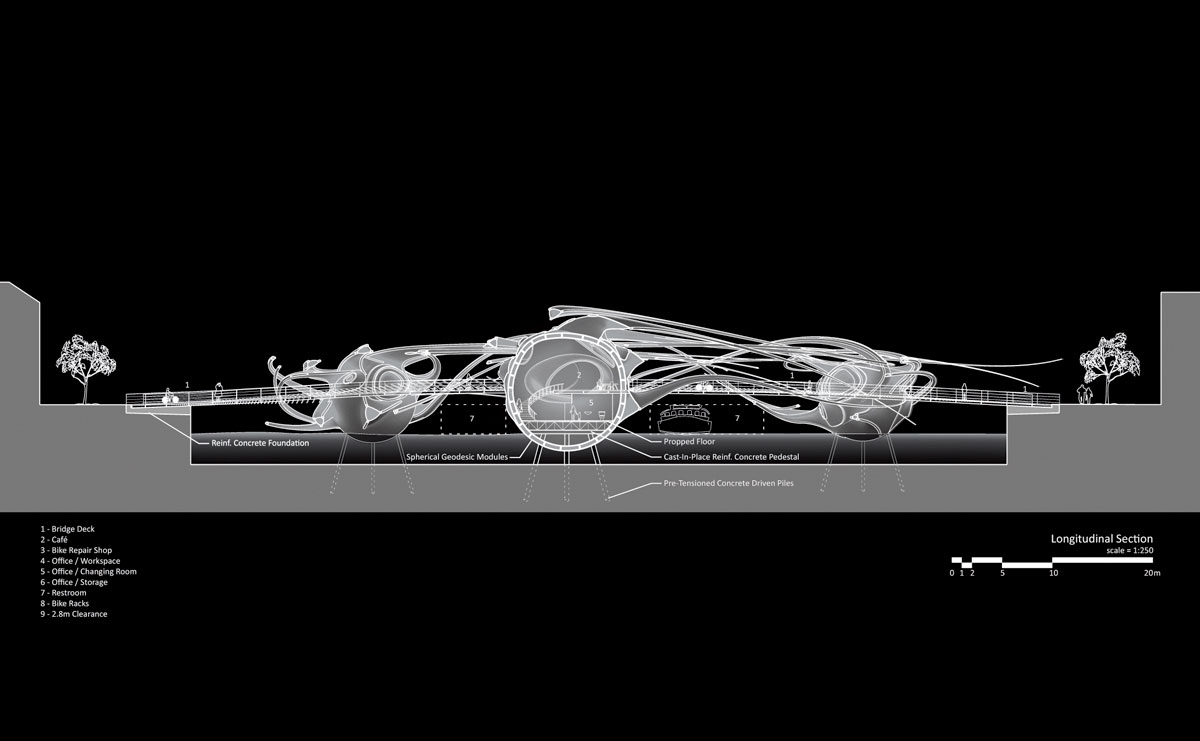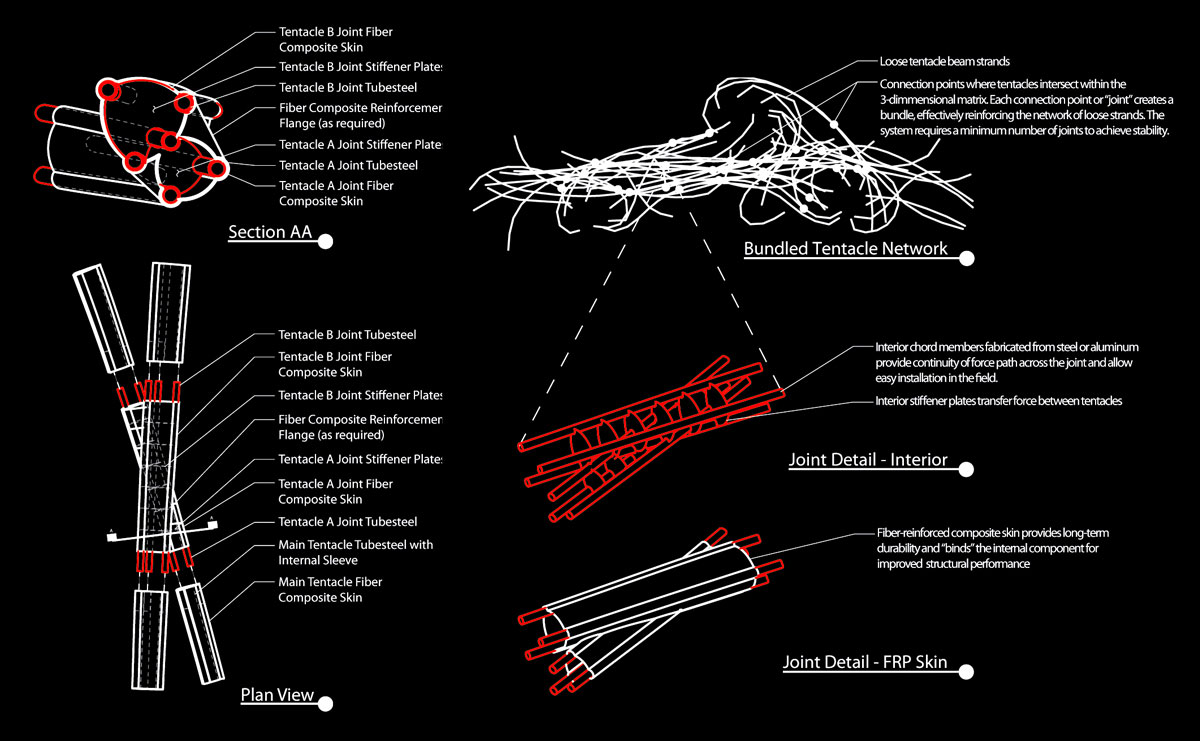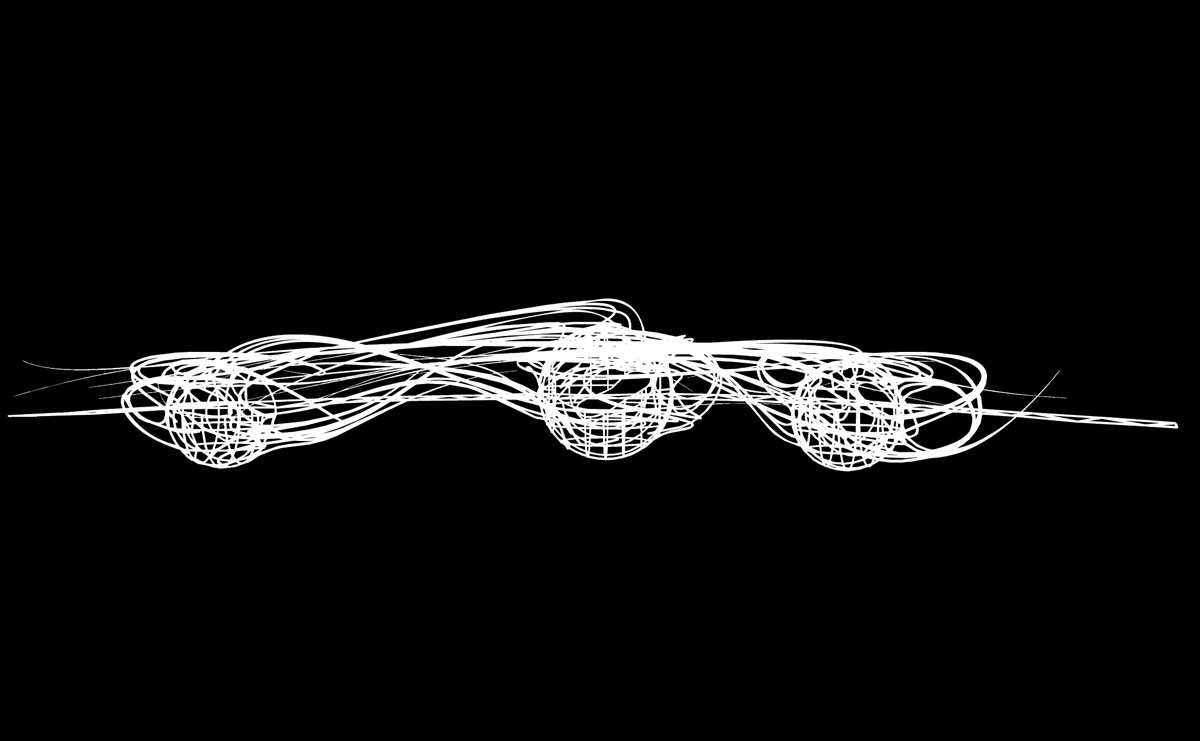Pedestrian Bridge
Client: City of Amsterdam
Program: Pedestrian Bridge
Size: 200 sqm
Budget: Withheld upon owner's request
Completion Date: January 31st 2012 competition
Built: Unbuilt
Material: Advanced composite construction
Architect: Herwig Baumgartner, Scott Uriu
Team: Nema Ashjaee
Consultant: Matthew Melnyk (structural engineer)
Pedestrian Bridge
VISION
The design for the Pedestrian Bridge, connecting the west bank of the Amstel canal with the Amsterdam Hermitage museum, aims to update and renew the idea of an iconic object, from something that is readily recognizable within its cultural context, to a contemporary design object. We included three small programmatic elements in the bridge design to emphasis social interaction within the local neighborhood and to create a visually and spatially stimulating environment that challenges its visitors perception, slows them down and creates a new gateway to the Amsterdam Hermitage museum.
The components of the design include- a bridge deck; 3 spherical volumes and strands of structural pipes. The Pipes are connected to the volumes and initially form a loose network of lines that by themselves are structurally weak. However, when connected together they become an extremely strong framework, which combined with the floating spherical volumes, form a pontoon bridge that can span across the 90m width of the canal.
PROGRAM DISTRIBUTION
Three (3) spherical volumes are spread along the length of a gently meandering pedestrian path with each volume holding a portion of the program. The spherical space located in the center of the bridge will house the café and a snack food concession and is laid out on two levels connected with a stair and with bathrooms and a storage space on the lower level. The other two volumes include a 50 sqm bike repair shop on the west end of the bridge and a space for administration offices located on the east side, close to the Hermitage museum. The administration space includes a 30 sqm office space a changing room, two bathrooms and a plant/ storage room. The 30 bicycle racks are distributed equally between the program components.
ADVANCED COMPOSITE CONSTRUCTION
In order to keep the bridge, light, durable and water tight, the shells of the bridge will be built with fiber-reinforced composite shell which is analogous to ship construction. The system will be a pre-fabricated composite system of metal framing and fiber-reinforced composite (FRP) skin. The construction of each beam segment will begin with a CNC milled foam core. The geometry is controlled in a digital 3-D model and can be precisely translated to CNC machining equipment. Once formed, the steel reinforcement will be attached to and/or embedded within the foam core after which point the assembly will be wrapped in FRP through a low-cost process known as Filament Winding which allows for significant weight reduction while maintaining strength and rigidity.
UNIVERSAL ACCESS AND NAVIGABLE WATERWAYS
All portions of the bridge are accessible per international disabled access standards including wheelchair accessibility and features for the blind and deaf. The main surface of the bridge is sloped less than 1:20 and the mezzanine portion of the facilities are accessible via an inclined platform lift.
There are two areas below the bridge and on either side of the center sphere that exceed the minimum requirements of navigable waterways as outlined in the competition requirements. The area kept clear for waterway passages is 6m wide and 2.8m tall.
STRUCTURAL COMPONENTS
Spherical Geodesic Modules
The main support for the bridge deck consists of three (3) spherical modules constructed of steel in a modified geodesic grid pattern. The geodesic “exoskeleton†allows for a minimum of structure to achieve the spherical geometry. The envelope or “skin†of the spheres is constructed of thin fiber-reinforced composite (FRP) shells. Analogous to ship construction, the FRP skin will attach to the interior steel framing and together the two forms an integral structural system where each reinforces the other.
Bundled Tentacles
Based on the principles of distributed structural systems - grid-shell, geodesic dome, and cable-net - the tentacle beams connect together in a highly irregular distributed structural network. As the tentacles weave together spatially, they connect to each other and bundle creating a rigid structure that is lightweight, stable and can span large distances. In this way, the tentacle structure supports the bridge deck, provides an overhead shade canopy, and provides connectivity between the three (3) support spheres, stabilizing them from rotation and differential movement. The tentacles will be pre-fabricated as a series of beams and joints and assembled on-site. Each component consists of an internal steel or aluminum frame wrapped in fiber-reinforced polymer (FRP) through a low-cost process known as Filament Winding.
Bridge Deck
The bridge deck is a lightweight steel frame supported at the shore and along its length by both tentacle beams and the spherical modules. With in-plane diagonal bracing, the bridge deck provides a semi-rigid diaphragm between the spherical modules and the shoreline.
Foundations
The spherical modules will be supported on pre-tensioned concrete driven piles, a common low-cost application in marine environments. A concrete platform will connect the piles above water to which the spherical modules will be attached.
The design for the Pedestrian Bridge, connecting the west bank of the Amstel canal with the Amsterdam Hermitage museum, aims to update and renew the idea of an iconic object, from something that is readily recognizable within its cultural context, to a contemporary design object. We included three small programmatic elements in the bridge design to emphasis social interaction within the local neighborhood and to create a visually and spatially stimulating environment that challenges its visitors perception, slows them down and creates a new gateway to the Amsterdam Hermitage museum.
The components of the design include- a bridge deck; 3 spherical volumes and strands of structural pipes. The Pipes are connected to the volumes and initially form a loose network of lines that by themselves are structurally weak. However, when connected together they become an extremely strong framework, which combined with the floating spherical volumes, form a pontoon bridge that can span across the 90m width of the canal.
PROGRAM DISTRIBUTION
Three (3) spherical volumes are spread along the length of a gently meandering pedestrian path with each volume holding a portion of the program. The spherical space located in the center of the bridge will house the café and a snack food concession and is laid out on two levels connected with a stair and with bathrooms and a storage space on the lower level. The other two volumes include a 50 sqm bike repair shop on the west end of the bridge and a space for administration offices located on the east side, close to the Hermitage museum. The administration space includes a 30 sqm office space a changing room, two bathrooms and a plant/ storage room. The 30 bicycle racks are distributed equally between the program components.
ADVANCED COMPOSITE CONSTRUCTION
In order to keep the bridge, light, durable and water tight, the shells of the bridge will be built with fiber-reinforced composite shell which is analogous to ship construction. The system will be a pre-fabricated composite system of metal framing and fiber-reinforced composite (FRP) skin. The construction of each beam segment will begin with a CNC milled foam core. The geometry is controlled in a digital 3-D model and can be precisely translated to CNC machining equipment. Once formed, the steel reinforcement will be attached to and/or embedded within the foam core after which point the assembly will be wrapped in FRP through a low-cost process known as Filament Winding which allows for significant weight reduction while maintaining strength and rigidity.
UNIVERSAL ACCESS AND NAVIGABLE WATERWAYS
All portions of the bridge are accessible per international disabled access standards including wheelchair accessibility and features for the blind and deaf. The main surface of the bridge is sloped less than 1:20 and the mezzanine portion of the facilities are accessible via an inclined platform lift.
There are two areas below the bridge and on either side of the center sphere that exceed the minimum requirements of navigable waterways as outlined in the competition requirements. The area kept clear for waterway passages is 6m wide and 2.8m tall.
STRUCTURAL COMPONENTS
Spherical Geodesic Modules
The main support for the bridge deck consists of three (3) spherical modules constructed of steel in a modified geodesic grid pattern. The geodesic “exoskeleton†allows for a minimum of structure to achieve the spherical geometry. The envelope or “skin†of the spheres is constructed of thin fiber-reinforced composite (FRP) shells. Analogous to ship construction, the FRP skin will attach to the interior steel framing and together the two forms an integral structural system where each reinforces the other.
Bundled Tentacles
Based on the principles of distributed structural systems - grid-shell, geodesic dome, and cable-net - the tentacle beams connect together in a highly irregular distributed structural network. As the tentacles weave together spatially, they connect to each other and bundle creating a rigid structure that is lightweight, stable and can span large distances. In this way, the tentacle structure supports the bridge deck, provides an overhead shade canopy, and provides connectivity between the three (3) support spheres, stabilizing them from rotation and differential movement. The tentacles will be pre-fabricated as a series of beams and joints and assembled on-site. Each component consists of an internal steel or aluminum frame wrapped in fiber-reinforced polymer (FRP) through a low-cost process known as Filament Winding.
Bridge Deck
The bridge deck is a lightweight steel frame supported at the shore and along its length by both tentacle beams and the spherical modules. With in-plane diagonal bracing, the bridge deck provides a semi-rigid diaphragm between the spherical modules and the shoreline.
Foundations
The spherical modules will be supported on pre-tensioned concrete driven piles, a common low-cost application in marine environments. A concrete platform will connect the piles above water to which the spherical modules will be attached.

